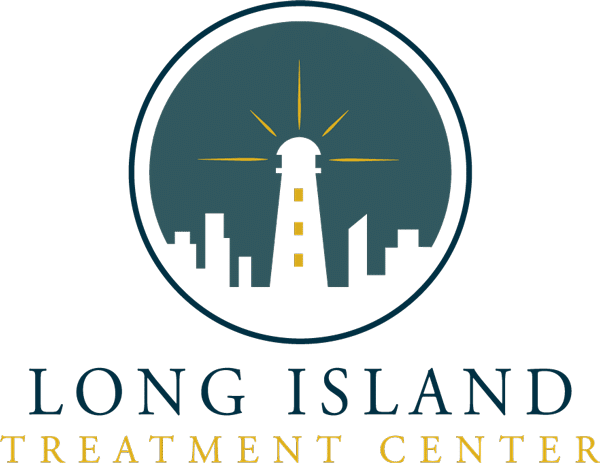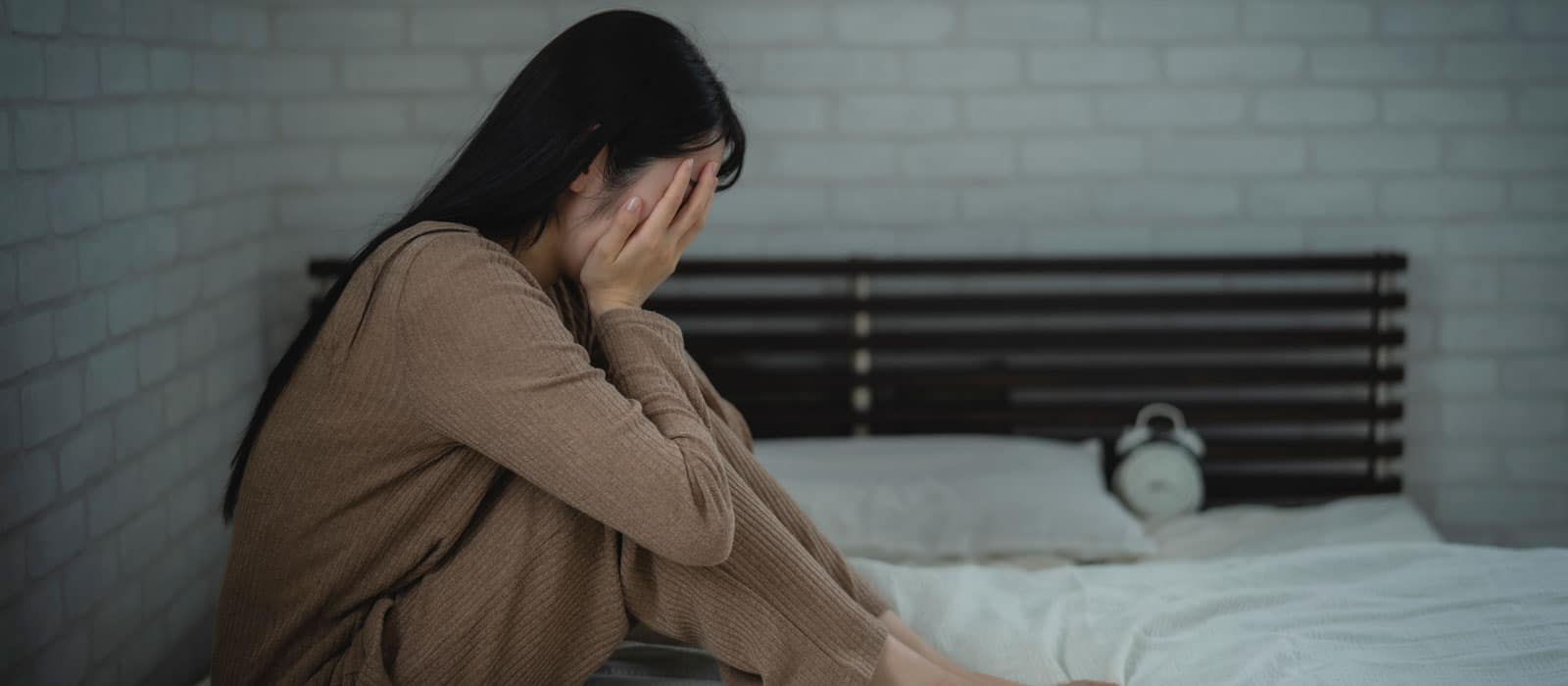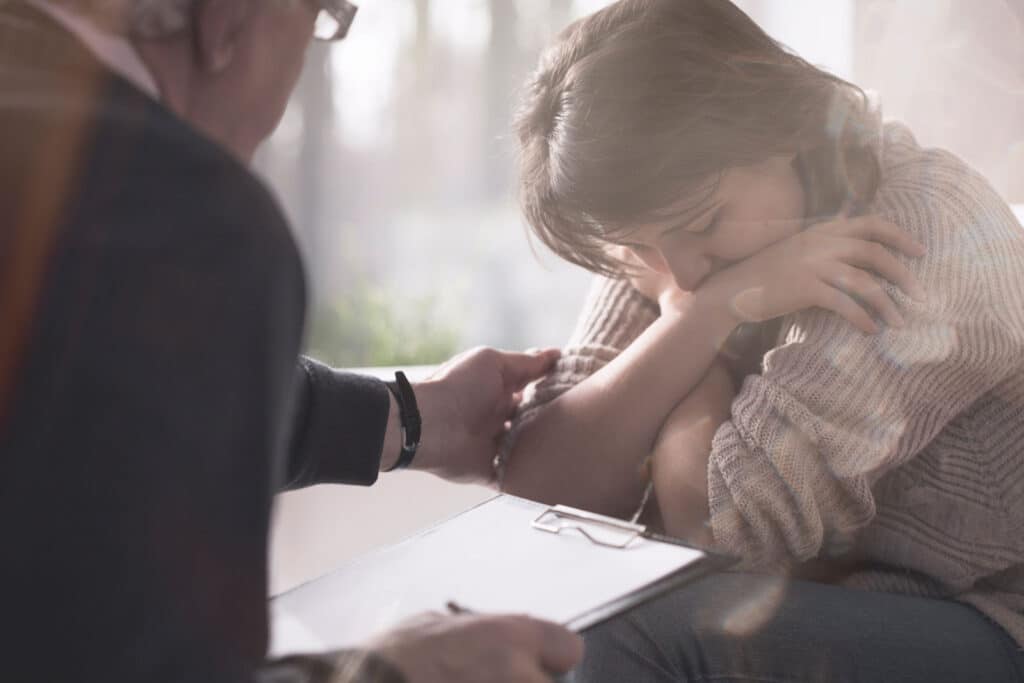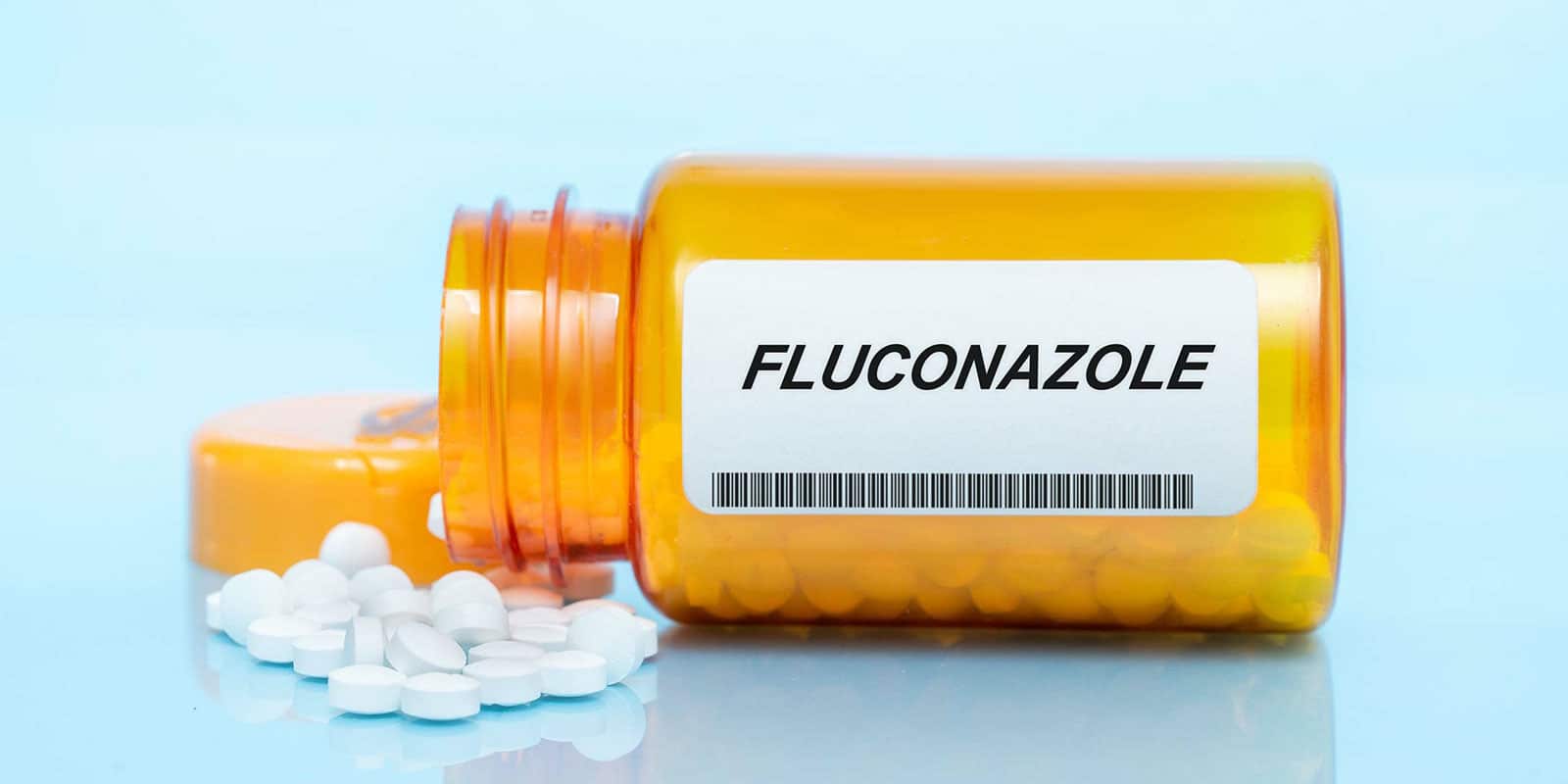A psychotic episode can be triggered by many different things, including use of marijuana or other substances. People struggling with psychotic disorders may also have developed an addiction while trying to self-medicate.
Psychotic disorders, rather than psychosis itself, are represented in the fifth edition of the Diagnostic and Statistical Manual. These disorders can fall into five different categories that may be experienced by a person who is having a psychotic episode. The first two, delusions and hallucinations, are commonly associated in the popular imagination with psychosis. The next two are disorganized thought or disorganized behavior. The fifth is something known as negative symptoms, which can resemble an extreme form of depression. The person may appear emotionless or lack the ability to focus at all, for example, or in more extreme cases, they may become catatonic.
Psychosis as a Five-Stage Process
What happens when a person experiences a psychotic disorder is often broken down into three stages: early, acute and recovery. However, there is another way to look at psychosis as well. Understanding psychosis and recovery as a five-stage process is about acknowledging that there is greater complexity to the situation than “psychotic” and “not psychotic” and that the recovery process itself may not be simple and straightforward for everyone.
First Stage
Both models agree that the first stage of psychosis can resemble other mental health problems and may therefore be difficult to identify, particularly in individuals who have not had a psychotic episode in the past. In addition, as is the case with each stage, not everyone will experience this initial stage.
For those who do, this stage can last for weeks or months. The symptoms vary, and it is unlikely that an individual will experience all of them.
Some symptoms are similar to those experienced by someone who is struggling with stress and depression. These symptoms may include the following:
- depression
- withdrawal
- difficulty sleeping
- difficulty getting out of bed
- changes in appetite
- trouble concentrating
- anxiety
- poor functioning
There are other symptoms that are less commonly associated with stress and which could be more easily recognized as the precursor to a psychotic episode:
- magical thinking
- suspicion
- belief that strangers are sending signals or trying to control them
- other strange ideas
One of the difficulties in identifying the first stage of psychosis is that symptoms can also manifest as restlessness, excitability and hyperactivity. A person might actually seem very upbeat as they head into a psychiatric crisis. However, these could also be symptoms of hypomania and not of a full-fledged psychotic episode.
For people vulnerable to psychosis and their loved ones, it is important to be on the alert for all of these symptoms. In some cases, it might be possible to take steps to prevent moving to the next stage and preventing a psychotic episode, such as getting more rest, focusing on a routine or increasing medication. Even people who are not in danger of a psychotic break can benefit from some of these steps.
Second Stage
The second stage, which is sometimes referred to as the “critical” or “acute” period, is the one in which the person experiences a full-blown psychotic episode.
This may manifest in several different ways, but in general, the individual loses a sense of what is and is not real.
Hallucinations, delusions and unusual behavior are common in a person who is in this acute period. Hallucinations can include hearing, seeing or smelling things that are not there. Delusions can take a number of different forms, including delusions related to religion or persecution. People might begin to believe that they are victims of a conspiracy, or they might experience delusions regarding their body.
A person’s behavior at this stage can alarm family, friends or coworkers. However, when the psychotic disorder takes the form of negative symptoms, it can be less obvious to people around the individual that the person is not simply experiencing severe depression. The person might just appear to be less and less involved in their own life and might seem to be acting strangely. It can therefore take longer for these people to get the treatment that they need.

Third Stage
Traditionally, the third stage of psychosis has been considered recovery. However, this stage can be further broken down into three stages itself to better understand what an individual is going through and how they perceive themselves and the world following an episode involving a psychotic disorder.
The first of these stages is the knowledge of vulnerability that the episode has created. The person no longer suffers from the beliefs, delusions or other symptoms. However, knowing what happened to them and that their minds are vulnerable to disorder can be destabilizing, especially if it is the first time the person has suffered from an episode of psychosis.
The individual may struggle to cope with their own feelings about what happened as well as the way that the society around them views psychosis and the reaction of friends and family.
There can be a challenge while the person accepts this new knowledge about themselves. If it is not their first psychotic episode, they might still struggle with the fact that they did not believe that they would experience another one or that it would be as difficult as it was.
Fourth Stage
In the fourth stage, the person may struggle with motivation as they begin to get treatment and accept what has happened to them. This can actually be a hopeful stage as the individual works with their care team to develop strategies to cope with their issues.
One of the challenges people may face at this point is getting their medication just right. For example, they may want to try to figure out what the minimal amount of medication they can take is, particularly since medications can come with side effects. This could be difficult, and in some cases, their medical providers may be reluctant to reduce their dosage.
Another challenge is that the individual’s family and friends may go overboard in trying to protect them at this stage. This is a natural urge, but while people initially do need safety and security in order to recover, they also need the opportunity to move beyond that and test their ability to thrive in the wider world.
People may also struggle with negative emotions related to their behavior during the psychotic disorder such as embarrassment.
Doctors, counselors and other health care providers can work with individuals at this stage to help them recover and be alert to future signs of a crisis, which can sometimes be prevented with early recognition.
Fifth Stage
The fifth and final stage of psychosis could in some ways be compared to the final adjustment period in many other stages of life. This is the point at which the individual has a better comprehension of what happened to them, their condition and how to prevent it.
Reaching this stage does not mean that a person will never experience a psychotic disorder again, but they are better equipped to recognize it in its early stages and potentially take steps to stop it from becoming more serious.
The person may not be working as frequently with their care team and may or may not still be using medication, but they will know how to access resources when they need them.
It could take months or years for someone to reach this stage. However, it can be a powerful time in a person’s life, when knowledge of their vulnerability is fused with experience and understanding that can allow them to help themselves and others who struggle with psychotic disorders.
If you have experienced symptoms of psychosis as a result of addiction or are struggling with addiction, there is help. Contact the Long Island Treatment Center in Hicksville, New York for more information.






